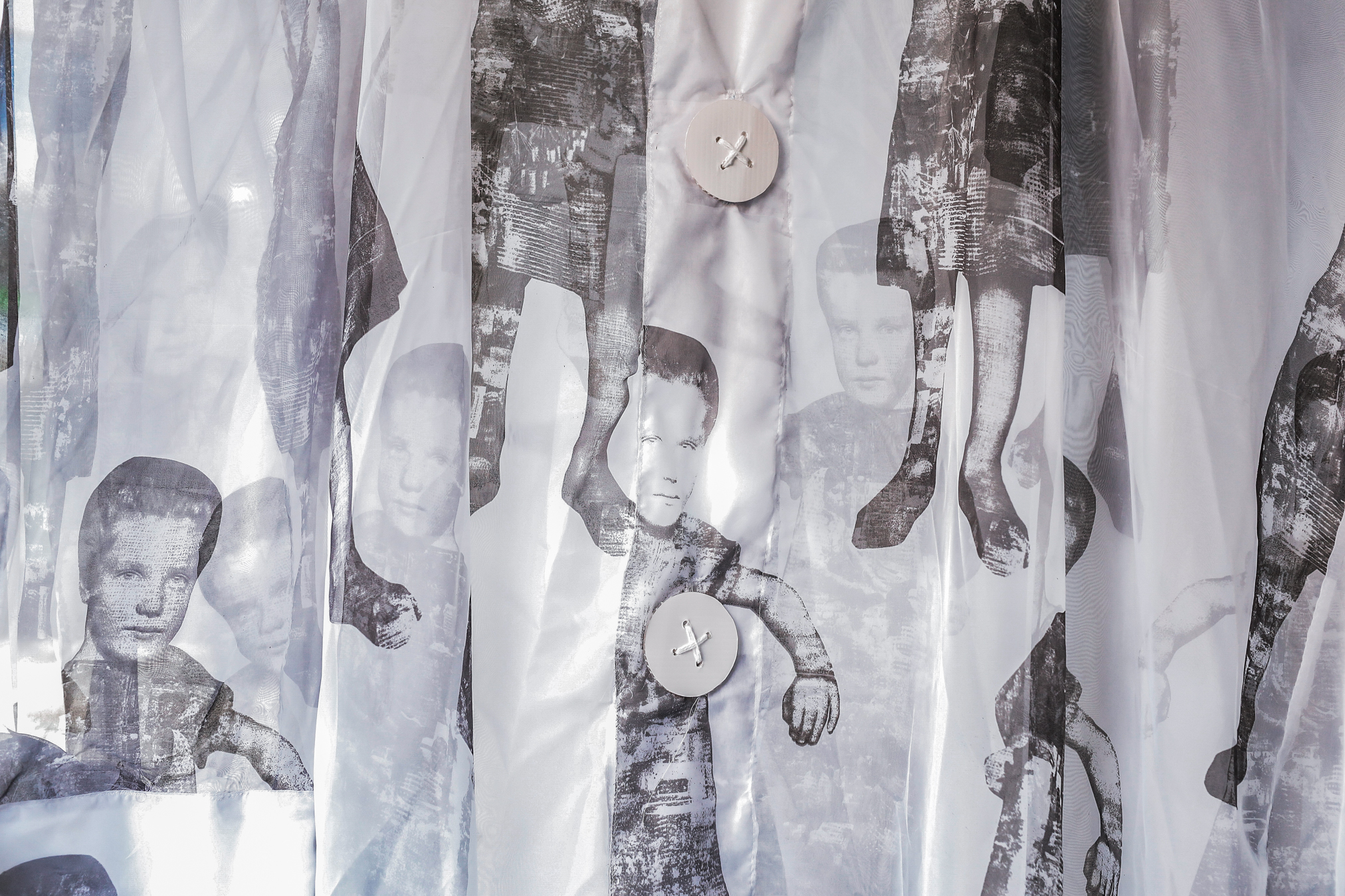From globalisation to self care, the shirt covers it all
From FASA grants for individualized projects, to student run exhibitions at the VAV Gallery and the Art Matters festival, Concordia fine arts students are given many opportunities to showcase their work annually. Student work of all mediums, and touching upon a broad range of issues is included; nothing is left unaccounted for.
Among these are the works of Elisabeth Perrault, Petro Psillos and Camille Charbonneau, student artists who work in a variety of mediums but share some common political and material ground.
These three student artists have used shirts as the medium for their messages.
Perrault’s untitled piece, exhibited during Relics.jpeg, at the VAV Gallery from Oct. 1 to 19, is a very large button-down shirt with printed motifs, made entirely by hand. The exhibition was curated based on material engagement according to the VAV’s curatorial statement, “relating to one another in their physicality and their ingenuity in the exploration of materials.”
Perrault’s work merged her skills in textile, fibre and design with screen printing processes to summarise the history of labour exploitation in the textile and fashion industries. “The image is made up of a young American girl in the 1900s. Through her, we can perceive actors exploited in their workforce,” said Perrault. “A shirt is a universal garment that most people have at home. A unisex garment that has no identifiable identity. It’s a reminder of how our everyday clothes are made.”
The transparency of the material is for emphasis of the voluntary blindness of our society in the face of this ethical problem,” the artist said.
Perrault’s design, choice of fabric, buttons and screen printed image encourage consumers to divest from fast fashion, reflecting the past and present of the clothing industry.
Similarly, painting and drawing student, Petro Psillos, created another large t-shirt made out of smaller, identical ones. “War (1991) is part of an ongoing series of authority-related t-shirt installations and sculptures,” said Psillos, who sewed four promotional t-shirts worn by Cineplex employees (himself included), to depict Ricardo Trogi’s recent film, 1991.
“Because I work at Cineplex Laval, I had to wear this shirt as part of my uniform for a month straight,” explained the artist. “During that time, the shirt got butter stains, popcorn oil stains, sweat, tears, rips… I started to think about how the employees of the cinema behave like a community, and how we’re all working together towards the end-goal of a corporation, but also developing skills and techniques, relationships and habits.”
Both Perrault and Psillos’s pieces critique contemporary consumption and labour exploitation by using the shirt as a medium.
“Since we look all the same wearing the same t-shirts, we are easy to group as one entity. To the outside customers […] we look all the same, without personality, not individual, not unique.” said Psillos. His work—exhibited as part of Art Matters during Sites of Embodied Silence at the VAV Gallery—uses the relatability of the shirt to confront viewers, increasing the typical size of the garment to create a wall, a physical obstacle to navigate in the gallery space.
For War (1991), Psillos intended to connect the exchange between business and culture as a testament to Quebec’s shrinking national identity. He saw this as a parallel to the way Cineplex and other corporations impose authority over their employees, especially through language control within immigrant communities enforced by Bill 101 and 115.
In both cases, I am stripped of my individuality and expected to submit to another person’s perspective,” said the artist.
Through the film it represents, to its colour and wear, War (1991) contains powerful references to escapism, globalization and bloodshed. Buttery popcorn stains allude to the dispute of oil and its production, and the size and name of the piece refer to the then recent demolition of the Berlin wall.
As a global symbol, the shirt can also be intensely personalized. Camille Charbonneau’s performance piece, 1 Corinthians 6:19, conceives the body as something that is borrowed, to be confined to a gender binary, and something to be hidden.
The piece, exhibited during Art Matters, consists of garments lined with beads. “While worn, the beaded sentence ‘YOUR BODY IS A TEMPLE’ found in the shirt, on the in-sole of the shoes, and inside the knees of the pants is imprinted on the skin through pressure,” explained Charbonneau. “The use of the shirt, and of the other pieces of clothing in the project, stand as a symbol of oppression […] the emphasis put on the body being ‘a’ temple instead of ‘your’ temple limits someone’s well-being to a singular way of applying care to a body, and for gender non-conforming individuals, that care involves removing the shirt, and letting the wounds heal.”
The biblical passage 1 Corinthians 6:19-20 reads, “Do you not know that your bodies are temples of the Holy Spirit, who is in you, whom you have received from God? You are not your own; you were bought at a price. Therefore, honour God with your bodies.”
Physical care, clothing restrictions and overall behavior enforced by social norms compiled with critiques on globalization, consumption, violence and politics are embedded in these artists’ respective works. As an often mundane object, the shirt embodies all of this, and proves to be a symbol of Concordia’s 2018-19 art scene.
